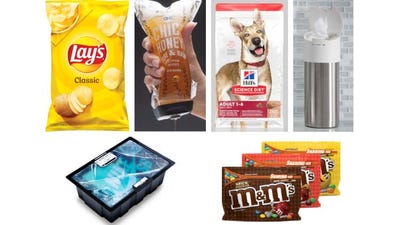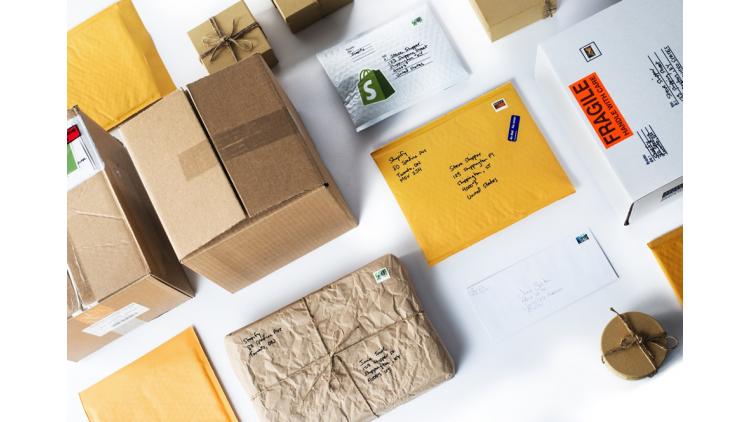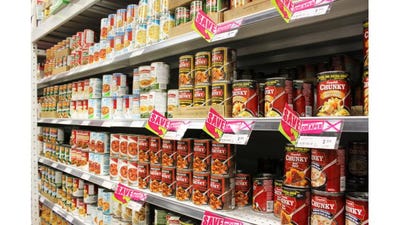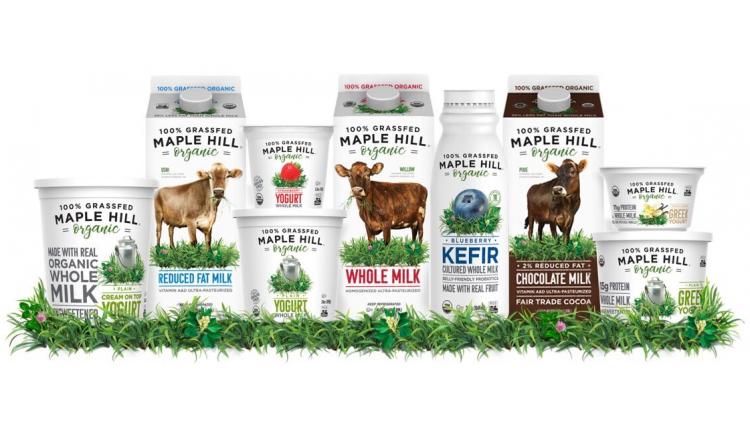
Sustainability, branding and “smart” packaging technologies continue to resonate with global packaging professionals, based on the leading stories from early 2020 on PackagingDigest.com.
In January 2020, you were most interested in learning about new packaging trends — rightly so! Brands need their packaging designs to stay current with what matters to today’s consumers.
In reverse order, here are the top five articles of January 2020, based on page views:

5. 12 design pieces that brought beauty to packaging in 2019.
In late 2019, our annual review of top articles of the year uncovered these gems related to packaging design:
1. Loop and big brands boldly reinvent waste-free packaging
2. 7 best packaging practices for cannabis marketers
3. 10 pack redesigns earn honors in Nielsen competition
4. Nike’s new green lobster shoe box tests packaging limits
5. What can you learn from great packaging designs and concepts?
7. Pets star on new packages of HIll's Science Diet pet food
8. Evolution of a package: Heinz ketchup
9. Top 3 AmeriStar winners excel in packaging design, sustainability
10. Packaging innovation awards celebrate excellence
11. Inverted pouch trend upends food packaging: Chico Honey
12. Social media-friendly food packaging ‘reignites’ Lay’s brand
Looking for more packaging design inspiration? Our new POWerhouse Packages searchable, sortable database contains all 200 new packages we published in 2019 — download your free copy today.

4. The sustainable packaging landscape: A decade in review.
Every so often, it’s sensible to look back to help guide your path forward. At the close of the 2010’s decade, sustainability expert Nina Goodrich reviewed significant developments from the last 10 years.
• Companies started the decade by making a business case for sustainability and proving its value through life-cycle analysis (LCAs).
• The Sustainable Packaging Coalition launched the ground-breaking How2Recycle label.
• The new The Closed Loop Fund helped create economic value for cities by increasing recycling rates.
• Other new initiatives, like the Ellen MacArthur Foundation’s New Plastic Economy project, put plastic packaging waste in the global spotlight.
• China’s Green Fence initiative sent the recycling market in the U.S. reeling.
• These two drivers — plastic in the ocean and China’s refusal to take the world’s recyclable materials — have significantly transformed the industry.
• ReFed’s report A Roadmap to Reduce U.S. Food Waste by 20 Percent revealed that Americans waste 63 million tons of food a year. It pointed to the greater sustainable impact of wasted water, cropland and fertilizer that occurs when food spoils before it can be consumed. So we started to focus on how packaging could help solve the tragedy of food-waste.
• Documentaries like Blue Planet II and National Geographic’s “Planet or Plastic” campaign put more information about marine plastic pollution in the hands of consumers, and industry felt mounting pressure to create solutions.
• In light of China’s ban on post-consumer plastics, unsorted mixed paper, and textiles, the U.S. started to build capacity to process recyclables at home and Chinese companies started investing in the U.S. paper and plastics recycling.
• Walmart announced its ambitious Project Gigaton, which hopes to remove a gigaton of greenhouse gas emissions from its supply chain, with packaging being one of the six targeted pillars of the project.
• The circular economy began to gain significant momentum as circularity became a goal for packaging.
• Circularity gains ground, but corporate goals for recycled content start to exceed the available supply.
• SPC’s Design for Recycled Content Guide provide brands and suppliers a guide for incorporating recycled content in packaging.
So, what’s next? Click the headline link at the top of the page to read Goodrich’s predictions for the 2020s.

3. Most food cans no longer use BPA in their linings.
Two years ago, Packaging Digest posted this Q&A with Can Manufacturer’s Institute president Robert Budway where he reveals that at least 90% of today’s food cans have replaced linings that previously contained the controversial chemical bisphenol-A (BPA).
Since the word got out, readership of this article has peaked: Currently, this is the Most-Read Article on our site.
Packaging material safety will continue to matter to companies because health-conscious consumers care — deeply.

2. 6 food and beverage packaging trends that will dominate 2020.
At the end of 2017, 99designs chief marketing officer Pamela Webber identified “5 packaging design trends on the way out in 2018” — and our readers clicked and clicked and clicked. So, when she offered to explore packaging design trends for 2020, we said, “Uh, yes!”
Here are six packaging design strategies brands need to know:
• Metamorphoses — This is where one design element goes through a transformation into another, creating an optical illusion that adds visual interest and draws consumers in to view the more intricate details of the packaging.
• Maximalism and rich, heavily detailed packaging — More consumers are seeking a sense of opulence, luxury, and extravagance in their products. That’s why maximalism in packaging design is poised to be all the rage in the upcoming year.
• Retro-futurism — The combination of design elements evoking nostalgia (retro) and positive anticipation (futurism) can actually work very well together. Packaging designers will create packaging that pairs both futuristic and retro design elements to create remarkable designs that will appeal to a variety of consumers.
• Ecologically-aware packaging — Marketers are increasingly driven to seek out more ecological, plastic-free packaging alternatives to current packaging materials.
• Transparent packaging — Packaging that shows off a product’s color is already popular within the beauty and skincare sector, and in 2020, Webber expects to see a surge of this trend in food and beverage packaging as well.
• Neatly structured layouts — Within the broader package design, selected typography makes for easy readability and a sense of structure that appeals to consumers and allows designers to take a more minimalistic approach to the rest of the design.

1. 5 branding and packaging trends for 2020.
It’s interesting to see how different packaging designers view the most important trends for the new year.
Here are the handful that matter most to Josh White, principal and creative director of NYC-based brand and design agency OffWhite Co. (some mirror what we’ve seen in Pamela Webber’s list on the previous page, but with a unique twist).
• Sustainable packaging — More zero-waste packaging concepts are on the way as companies continue to promote packaging that’s both good for you and good for the environment.
• Transparency with consumers — Consumers demand honesty about product ingredients and how products are made. Traditional packaging is being reinvented to embrace clear, to-the-point wording and when appropriate, see-through cut-outs that reveal what’s inside.
• Sophistication — Companies are increasingly using strong, uncluttered messaging in simple, yet sophisticated bold colors and big type to communicate trust and respect.
• Consistency — 2020 will be the year to refresh your brand story and ensure you’re conveying it in the most compelling way possible, across all brand assets, packaging and touchpoints.
• Tech-centric — Consumers love their smart devices, and increased use of technology is, in turn, putting pressure on companies to deliver “smart tech ready” packaging.
About the Author(s)
You May Also Like




